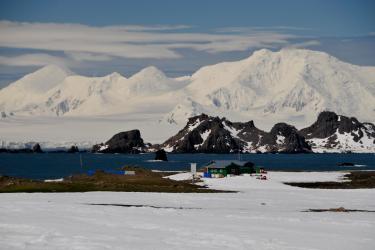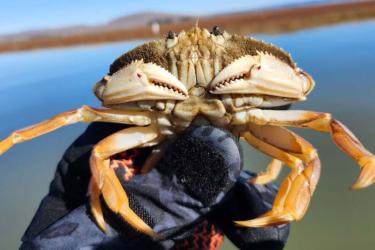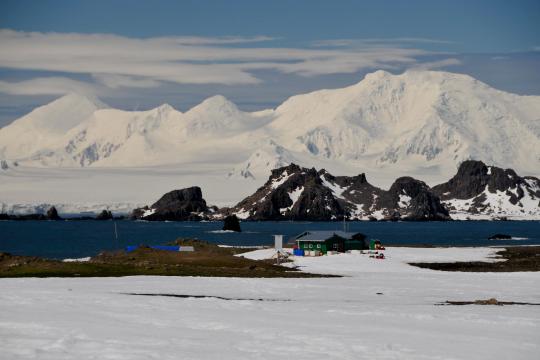On June 6, Dr. Vera Trainer and a team of scientists returned from a 25-day ocean acidification expedition off the West Coast aboard the R/V Melville in an effort to measure how changes in our ocean's acidity may affect the marine food web—starting with phytoplankton, the base of the food chain and the "salad of the sea". The cruise from San Francisco, CA to Seattle, WA is part of a project funded by the National Science Foundation to help scientists study, for the first time, how phytoplankton in the ocean responds physiologically to pH changes.
The scientists are specifically interested in finding out what happens to the quality of the nutrition that phytoplankton provides to the entire marine food chain, up to the humans and other seafood consumers who eat fish and shellfish. What happens to their nutrient supply and lipid content (think heart-healthy omega-3s)? The lower the food quality, the less nutritional the diet to fish and other organisms up the food chain. Will nutrient-limited phytoplankton also become more toxic (think harmful algal blooms)?
A collaborative study
Dr. William Cochlan led a collaborative team of scientists from San Francisco State University (lead institution), NOAA-Northwest Fisheries Science Center (Vera Trainer, Brian Bill and Kathryn Ferguson - a NOAA Hollings scholar), NOAA-Pacific Marine Environmental Lab (Dick Feely and Simone Alin), University of Main, Western University (Canada) , the University of Washington Northwest Association of Networked Ocean Observing Systems, University of Hawaii, and University of Rhode Island. Two Teachers-at-Sea from Texas and Tennessee also joined the expedition.
Basics of ocean acidification
The cold, nutrient-rich waters that upwell along the U.S. West Coast make our region a natural, living laboratory for studying the effects of chemical changes in the ocean, particularly the changes brought on by increased atmospheric carbon dioxide.
This excess carbon dioxide is absorbed by our oceans and leads to chemical changes that make it more acidic. Ocean acidification makes it harder for many marine creatures to develop normally and survive, because it disrupts the calcification process of shell-producing organisms, such as krill, oysters, sea urchins, and corals. These changes can lead to a ripple of effects up the marine food chain to seafood consumers like us. The scientists aboard the R/V Melvillesampled waters from the deep, upwelled zones off our coast, since these waters naturally have a lower pH and may be an indication of the level of ocean acidity in the future.
Sampling at sea
The research vessel traversed coastal waters that represented low pH, upwelling zones along Point Sur and Point St. George off the California coast, as well as higher pH, post-upwelling (relaxed) waters off Heceta Bank, Oregon.
The team encountered a large bloom of Pseudo-nitzschia, the organism that produces domoic acid that can kill sea lions, sea otters, sea birds and humans and has closed the Washington coast razor clam fishery for a year. Scientists will analyze the amount of domoic acid present in the cells found at these two low pH sites to help determine if phytoplankton become more toxic in culture with lowered pH under nutrient stress.
At the Heceta Bank, Oregon site, the team encountered two other toxic phytoplankton species, Alexandrium, a historically toxic organism to this region that can cause paralytic shellfish poisoning in humans, and Dinophysis, that caused the first ever diarrhetic shellfish toxin event in the U.S. in Sequim Bay in 2011. Here again, the scientists are trying to determine the possibility of these cells becoming more toxic in a future, low pH ocean.
The data collected on this expedition will undergo further analysis and review, but will eventually help give us a better understanding of the effects of a future acidifying ocean on our entire marine food web-- from phytoplankton, to fish and fisheries, to the seafood on your plate. Stay tuned for more stories on this topic and learn more about our work by visiting our page on Harmful Algal Blooms.





